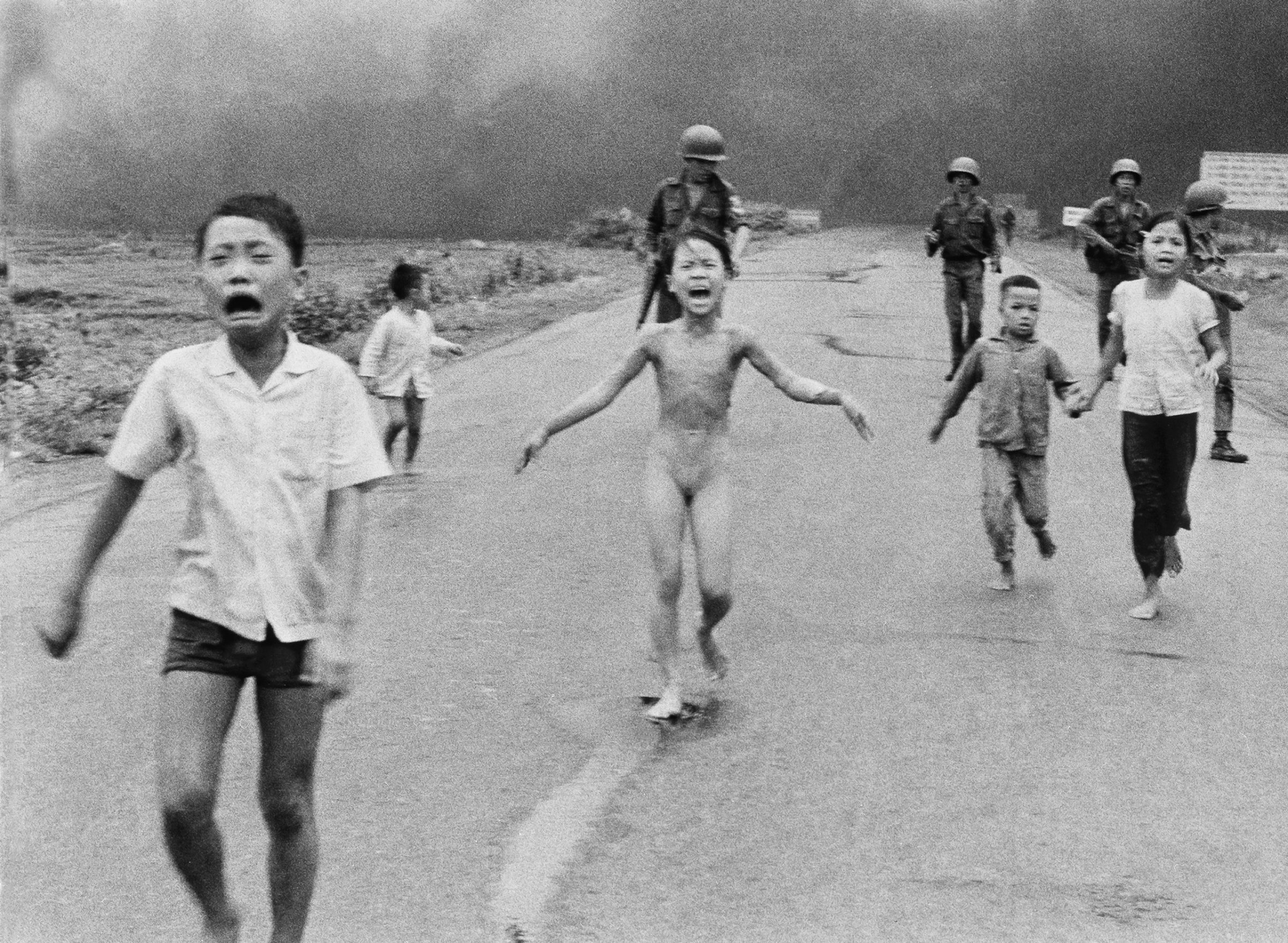
This week, Facebook briefly removed and quickly reinstated one of the most powerful images to emerge from war—a 1972 photograph of a nine-year-old Vietnamese girl—after initially saying the image violates the company’s policies on displaying nudity. A censorship battle ensued.
Espen Egil Hansen, the editor-in-chief of Norway’s Aftenposten, slammed Mark Zuckerberg for a perceived abuse of power, calling the CEO of Facebook “the world’s most powerful editor.” On Friday, the company reinstated the picture and said “the value of permitting sharing outweighs the value of protecting the community by removal.” An initial Facebook statement recognized its iconic status but said “it’s difficult to create a distinction between allowing a photograph of a nude child in one instance and not others.”
The picture, taken by Associated Press photographer Nick Ut, has become an icon of conflict photography. The faces of collateral damage and friendly fire are generally not seen. This was not the case with nine-year-old Phan Thi Kim Phuc.
On June 8, 1972, Ut, who did not immediately return a request for comment Friday, was outside Trang Bang, about 25 miles northwest of Saigon, when the South Vietnamese air force mistakenly dropped a load of napalm on the village. As the Vietnamese photographer took pictures of the carnage, he saw a group of children and soldiers along with a screaming naked girl running up the highway toward him. Ut wondered, Why doesn’t she have clothes? He then realized that she had been hit by napalm. “I took a lot of water and poured it on her body,” Ut told TIME in an interview in late 2013. “She was screaming, ‘Too hot! Too hot!’”
Ut took Kim Phuc to a hospital, where he learned that she might not survive the third-degree burns covering 30 percent of her body. So with the help of colleagues he got her transferred to an American facility for treatment that saved her life.
Ut’s photo of the raw impact of conflict underscored that the war was doing more harm than good. It also sparked newsroom debates about running a photo with nudity, pushing many publications, including the New York Times, to override their policies. The photo quickly became a cultural shorthand for the atrocities of the Vietnam War and joined Malcolm Browne’s Burning Monk and Eddie Adams’ Saigon Execution as defining images of that brutal conflict.
When President Richard Nixon wondered if the photo was fake, Ut commented, “The horror of the Vietnam War recorded by me did not have to be fixed.” In 1973 the Pulitzer committee agreed and awarded him its prize. That same year, America’s involvement in the war ended.
More Must-Reads from TIME
- Cybersecurity Experts Are Sounding the Alarm on DOGE
- Meet the 2025 Women of the Year
- The Harsh Truth About Disability Inclusion
- Why Do More Young Adults Have Cancer?
- Colman Domingo Leads With Radical Love
- How to Get Better at Doing Things Alone
- Michelle Zauner Stares Down the Darkness
Contact us at letters@time.com